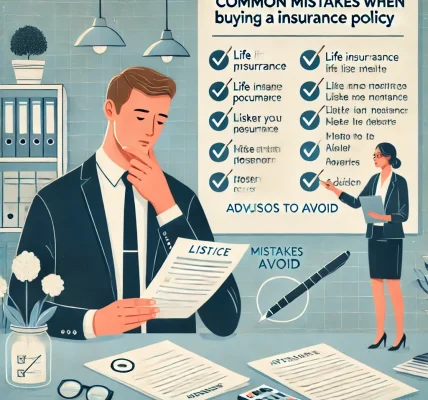Introduction
Running a business requires strategic planning to ensure long-term success. However, many business owners overlook one critical aspect: protecting their company from financial disruption in case of the unexpected loss of a key employee. This is where Key Person Life Insurance becomes an essential tool.
In this DIY guide, we will explore what Key Person Life Insurance is, why business owners need it, how it works, and steps to secure the right policy. Whether you own a small startup or a large enterprise, understanding this insurance can help safeguard your company’s future.
What Is Key Person Life Insurance?
Key Person Life Insurance is a type of life insurance policy that a business takes out on a critical employee or executive whose loss could have a significant financial impact.
The business pays the premiums, and in case of the key person’s death, the company receives the death benefit. This payout can be used to cover financial losses, recruit and train a replacement, or settle debts.
Who Qualifies as a Key Person?
A key person is anyone whose contribution is vital to the business, such as:
- Business Owners or Founders – The driving force behind the company’s vision and leadership.
- Top Executives or Managers – Those making critical operational decisions.
- Sales Leaders – Individuals responsible for major client accounts and revenue generation.
- Specialized Skilled Employees – Experts with unique skills that are hard to replace.
Why Business Owners Should Consider Key Person Life Insurance
1. Financial Stability in Crisis
Losing a key employee can disrupt operations and lead to financial losses. A key person policy ensures the business remains financially stable by covering:
- Revenue loss from lost clients or paused operations.
- Recruitment and training costs for a replacement.
- Paying off business debts or investors.
2. Protecting Business Continuity
Without a key person, operations may slow down or even halt. The insurance payout allows the company to continue running smoothly while adjusting to the change.
3. Enhancing Business Creditworthiness
Lenders and investors often view businesses with key person insurance as lower risk. This improves the company’s ability to secure loans and attract investors.
4. Supporting Business Succession Planning
If a business owner is the key person, the policy can fund a smooth ownership transition or help surviving partners buy out the owner’s shares.
5. Building Confidence Among Employees and Clients
Knowing that the business has financial protection in case of unexpected leadership loss builds trust among employees, customers, and stakeholders.
How Does Key Person Life Insurance Work?
- The Business Identifies the Key Person – Determine which employees are crucial to business success.
- Choose the Coverage Amount – The insurance payout should reflect the financial impact of losing the key person.
- The Business Buys the Policy – The company owns and pays for the policy.
- The Business Receives the Benefit – If the key person passes away, the company receives the payout.
- Funds Are Used for Recovery – The business can use the payout for any necessary expenses related to the loss.
Types of Key Person Life Insurance
1. Term Life Insurance
- Provides coverage for a specific period (e.g., 10, 20, or 30 years).
- More affordable but offers no cash value.
- Best for startups and growing businesses.
2. Whole Life Insurance
- Provides lifetime coverage.
- Builds cash value that can be used as an asset.
- Suitable for businesses with long-term succession planning needs.
3. Universal Life Insurance
- Offers flexible premiums and lifelong coverage.
- Can accumulate cash value for business use.
Steps to Secure Key Person Life Insurance
Step 1: Assess Business Needs
- Identify the key roles that need coverage.
- Estimate the financial impact of losing a key person.
Step 2: Compare Insurance Providers
- Different insurers offer varying coverage options and rates.
- Work with an insurance broker to find the best policy.
Step 3: Determine the Right Coverage Amount
- Calculate potential revenue loss, recruitment costs, and other financial impacts.
- Choose a payout amount that ensures business stability.
Step 4: Apply for the Policy
- The key person may need to undergo a medical examination.
- The company completes paperwork and pays premiums.
Step 5: Review and Update the Policy Regularly
- As the business grows, update coverage to match changing needs.
- Review the policy annually to ensure adequate protection.
Tax Implications of Key Person Life Insurance
- Premium Payments: Usually not tax-deductible as a business expense.
- Death Benefit: Generally tax-free if the company is both the policy owner and beneficiary.
- Cash Value Growth: If using whole or universal life insurance, the accumulated cash value may have tax advantages.
(Note: Consult a tax advisor for details specific to your jurisdiction.)
Common Mistakes to Avoid When Buying Key Person Insurance
1. Underestimating the Coverage Amount
- A low payout may not fully cover financial losses or replacement costs.
2. Delaying Insurance Purchase
- Businesses often delay until it’s too late. Buy coverage while key employees are in good health.
3. Not Reviewing Policies Regularly
- Business conditions change. Adjust coverage as needed.
4. Ignoring Other Business Insurance Needs
- Key person insurance is one part of a solid risk management strategy. Consider buy-sell agreements and disability insurance.
5. Choosing the Wrong Type of Policy
- Match the policy type to business needs. For example, term insurance is cost-effective but may not be ideal for long-term planning.
Conclusion
Key Person Life Insurance is an essential tool for business continuity and financial security. It ensures that the sudden loss of a vital team member does not lead to financial collapse. By assessing risks, choosing the right policy, and keeping it updated, business owners can safeguard their company’s future.




